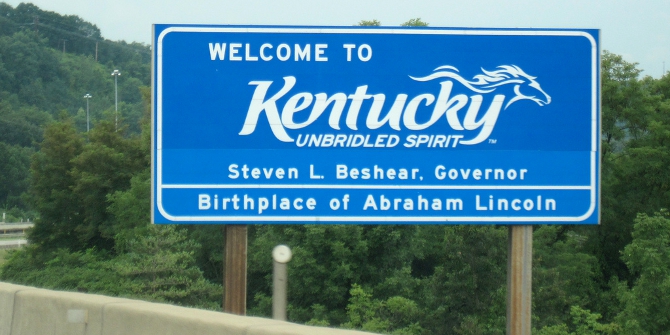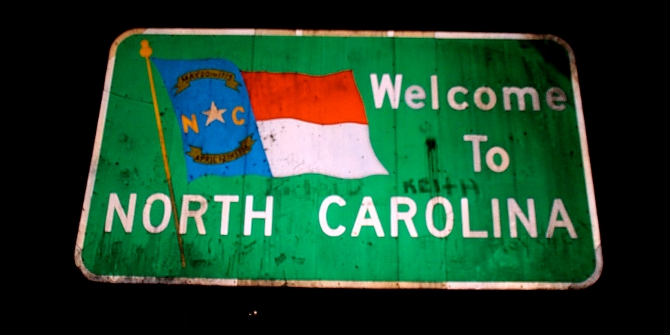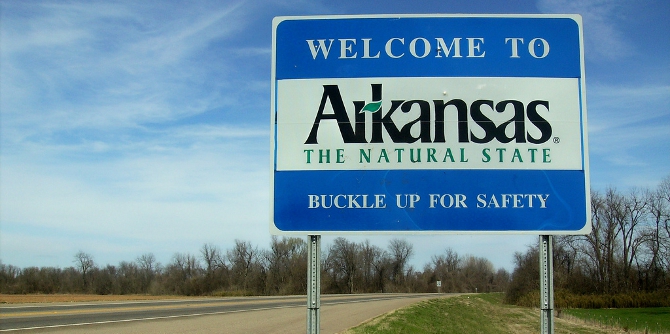 This week, Republican Cory Gardner defeated incumbent Colorado Senator, Mark Udall, winning by three points after a tight election race. Peter Hanson writes that in the lead up to the election Gardner moved to the middle, disavowing support for a state personhood amendment, and remaining silent on marijuana legalization and same sex marriage. This break from the past, and Gardner’s subsequent victory, show that Colorado is now turning its back on social conservatism.
This week, Republican Cory Gardner defeated incumbent Colorado Senator, Mark Udall, winning by three points after a tight election race. Peter Hanson writes that in the lead up to the election Gardner moved to the middle, disavowing support for a state personhood amendment, and remaining silent on marijuana legalization and same sex marriage. This break from the past, and Gardner’s subsequent victory, show that Colorado is now turning its back on social conservatism.
Social conservatives who oppose abortion and same sex relationships have long been a powerful force in Colorado politics. Ironically, the defeat of Democratic Senator Mark Udall by Republican Cory Gardner in the wake of a heated debate about women’s reproductive rights may be a sign of the ebbing of social conservatism rather than its strength.
Social conservatives were deeply influential in Colorado politics just 20 years ago. In 1992, Colorado voters approved an amendment to the state constitution that prohibited anti-discrimination laws protecting gays and lesbians. The amendment was blocked from taking effect by the U.S. Supreme Court, but not before Colorado was labeled as the “hate state” by opponents of the measure. As recently as 2012, Republicans in the state legislature took the extraordinary step of adjourning the session rather than allow a bill authorizing civil unions for gays and lesbians to pass. Meanwhile, abortion opponents routinely place what is known as the “personhood” amendment on the ballot. It would define life as starting at conception, criminalizing abortion and some forms of birth control.

Does Cory Gardner’s election to the Senate signal a continuation of this brand of social conservatism? Certainly, Democrats wanted voters to think so. Mark Udall attacked Gardner so aggressively about his record on reproductive rights that Udall was nicknamed “Mark Uterus” in the media. One interpretation of the failure of Udall’s effort is that voters either didn’t care about Gardner’s record or actually agreed with it.
But, substantial evidence suggests that the heyday of social conservatism in Colorado is gone, and not coming back anytime soon. The most compelling evidence comes from Gardner himself. His first step as a candidate was to break from the unbending social conservatism of past candidates. He disavowed his prior support for Colorado’s personhood amendment before he even won the Republican primary. This move would have led to a bitter civil war among state Republicans in past years. In 2014, it was accepted with barely a whimper. Gardner then went on the offense by offering his own plan to make birth control more widely available to women.
Gardner’s move to the middle signals just how much Colorado voters have changed in the last two decades. Once reliably Republican, Colorado voters handed victories to Barack Obama in 2008 and 2012. They withstood a Republican wave and elected a Democratic governor and senator in 2010. Democrats have dominated the state legislature, passing gun control legislation and authorizing civil unions for gays and lesbians. Voters legalized recreational marijuana in 2012.
Colorado’s shift to the left is the result of slowly unfolding demographic changes that are pushing the state in a more Democratic direction. Migration from liberal states like California and the state’s growing Latino population are increasing the share of Democratic voters in Colorado. When the University of Denver surveyed Colorado voters in 2012, we found that only 30 percent of them had been born in the state, and that those born elsewhere were substantially more likely to vote for Democrats.
The state is now divided in thirds between Democrats, Republicans and independents. Our polling showed that independents are socially liberal and difficult to distinguish on those issues from Democrats, supporting legal recognition for same sex relationships and legalizing marijuana. Social conservatives are as opposed to these policies as ever, but they are increasingly outnumbered. Voters rejected the personhood amendment this year by an overwhelming margin of 65 percent.
Indeed, this election is noteworthy for the extent to which it revealed the Democratic advantage on social issues. Gardner disavowed personhood, supported expanding birth control options, and was silent on issues like marijuana and same sex relationships. He did not seek to persuade the voters that his past stance on reproductive rights was correct, or seek to rally social conservatives to his cause. He simply abandoned his old position. “I’ve learned to listen,” Gardner told the Denver Post. “I don’t get everything right the first time.” His winning strategy was to accuse Mark Udall of being too close to Barack Obama, whose popularity in Colorado has fallen since he won the state in 2012.
Gardner also benefitted from the fact that many Democrats did not vote, an advantage Republicans won’t be able to count on in 2016. Democrats are younger, poorer and less educated on average than Republicans, and they often vote in lower numbers than Republicans when the president is not on the ballot. The turnout rate dropped from 63 to 43 percent from 2012 to 2014 in heavily Democratic Denver county, and from 73 to 46 percent in Boulder county, another Democratic stronghold. Turnout in both counties was below the state average of 53 percent.
As disappointed as Democrats are that they lost this election, Gardner’s actions in the campaign are actually a tacit admission that Democrats have won the battle for public opinion on cultural issues in Colorado. As one frustrated Democratic strategist said, “[Gardner] ceded the argument on choice and reproductive rights.” Gardner was elected thanks to the unpopularity of President Barack Obama and a small electorate that skewed Republican – and because he abandoned positions that once would have been an important part of the Republican platform.
Update 11 November: Colorado election officials continued to update turnout figures after this post was written. According to final figures, turnout was 56 percent for the state of Colorado, 55 percent for Boulder county, and 47 percent for Denver county. Republicans were estimated to have a 5.4 percent advantage over Democrats in turnout. Nate Cohn at the New York Times also discussed turnout in Colorado.
Featured image credit: Mindy (Flickr, CC-BY-NC-SA-2.0)
Please read our comments policy before commenting.
Note: This article gives the views of the author, and not the position of USApp– American Politics and Policy, nor of the London School of Economics.
Shortened URL for this post: http://bit.ly/10YLuhf
_________________________________________
 Peter Hanson – University of Denver
Peter Hanson – University of Denver
Peter Hanson is an Assistant Professor at the Department of Political Science at the University of Denver. His fields of interest include the U.S. Congress and how it functions when parties become polarized. He also helped to design and carry out the University of Denver’s first Colorado Voter Poll in the 2012 presidential election. He worked as a legislative assistant in the office of Senate Democratic leader Tom Daschle from 1996-2002, and in the office of U.S. Rep. Stephanie Herseth-Sandlin in 2004.







1 Comments